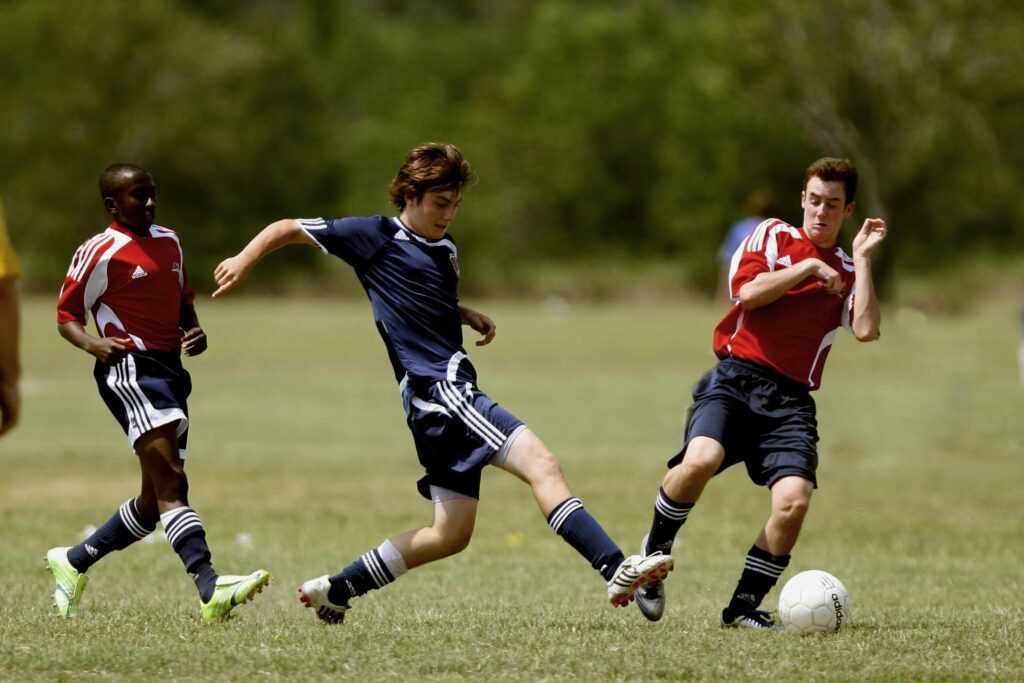Football is a thrilling and physically demanding sport that teaches discipline, teamwork, and resilience. But for rookie players, understanding the risks and how to prevent injuries is essential to long-term success and safety on the field.
According to the CDC, contact sports like football are a major contributor to youth sports injuries. They account for 45% of all emergency department visits for sports- and recreation-related TBIs and concussions in children aged 17 and under.
The statistics are even more concerning at the high school level. Tackling causes nearly two-thirds of concussions, and almost half occur during running plays. Defensive positions like linebackers sustain 60% of concussions, while running backs make up nearly half of all offensive-related concussions.
These numbers highlight the importance of proper training, technique, and awareness from the very beginning.
This article offers practical injury prevention tips tailored specifically for new football players stepping onto the field for the first time.
Every Session Should Include Proper Warm-Up and Cool-Down Practices
A proper warm-up isn’t just tradition; it’s a scientific necessity. According to the Mayo Clinic, start by engaging large muscle groups like the hamstrings, then move into dynamic exercises that mimic your sport:
- Walk briskly for 5–10 minutes before a run
- Swim slowly before increasing speed
- Use dynamic stretches like leg swings, arm circles, or high knees
A warm-up should cause light sweating but not fatigue. After practice, cooling down helps the body transition to rest, reduces stiffness, and aids recovery. Try:
- Walking slowly after running or brisk walking
- Swimming laps slowly for 5–10 minutes
Stretching is most effective after your muscles are warm. Incorporate static stretches in your cool-down to improve flexibility and prevent injury.
Prioritize Strength and Conditioning
Developing core strength and muscular stability helps rookie players better absorb impact and reduce injury risks. Conditioning also improves stamina, which is essential; many injuries happen when fatigue sets in.
According to the NIH, a study compared traditional resistance training, such as squats and deadlifts, with complex training in amateur futsal players. Over eight weeks, researchers found that complex training more effectively enhanced performance, particularly in strength and power. This highlights the value of varied, sport-specific conditioning.
Consistency is key. Regular workouts, throughout the season, build resilience and reduce the risk of overuse injuries. Working with a coach or trainer ensures balanced training that targets all major muscle groups and supports long-term athletic development.
Use Protective Gear Correctly
Using protective gear correctly is essential for injury prevention in football. Helmets, pads, cleats, and mouthguards must fit well and comply with current safety standards to provide effective protection. Ill-fitting or worn-out equipment can increase the risk of serious injuries like concussions or fractures. Regularly check your gear for damage or signs of wear, and replace anything outdated or compromised.
Recent updates in the National Football League emphasize the need for proactive safety measures. Players can now wear Guardian Caps, once limited to practice sessions, during actual games. These padded helmet covers aim to reduce concussions, addressing the league’s ongoing concerns about head injuries and their long-term effects.
The NFL has also introduced new helmet designs, rule adjustments, and revised practice routines to further enhance player safety. For all athletes, especially rookies, investing in quality gear and using it properly should never be overlooked.
Have a Plan to Deal with Injuries
Even with proper precautions, injuries are sometimes unavoidable in football. When they occur, prompt medical attention is critical. Early diagnosis and a structured treatment plan reduce the risk of long-term complications.
In some cases, injuries result from faulty equipment, unsafe field conditions, or negligence. If so, you may be eligible to file a personal injury lawsuit. According to TorHoerman Law, personal injury cases can have profound impacts, and trusting your case to an experienced attorney is key to recovery.
In a city like Chicago, injuries among athletes are common. One example is Cubs pitcher Justin Steele, who will miss the 2025 season due to elbow surgery.
Having legal support becomes crucial in such injury-prone environments to protect athletes’ rights and ensure proper compensation. Consulting the best personal injury lawyer in Chicago ensures you understand your rights and options for compensation, whether for medical costs or long-term effects.
Stay Hydrated and Eat Right
Dehydration can lead to muscle cramps, fatigue, and reduced reaction time, increasing the likelihood of injury. A well-balanced diet promotes muscle recovery and supports overall physical resilience.
Elite college football programs illustrate the scale and importance of proper nutrition. The University of Florida serves 200 pounds of chicken daily, and the University of Oregon receives 800 pounds of produce each week.
Feeding teams of 120 players requires meticulous planning and significant investment. Dietitians, chefs, and administrators work together to create Vegas-style buffets featuring fresh, nutrient-dense foods.
This commitment extends beyond meal quality, incorporating nutrition education to help athletes make informed choices. It also ensures a constant supply of wholesome options aimed at maximizing health, performance, and injury resilience.
Frequently Asked Questions (FAQs)
How to not break bones in football?
To avoid broken bones in football, use properly fitted protective gear, especially helmets and pads, and always follow safe tackling techniques. Strength training, flexibility exercises, and proper warm-ups improve bone resilience. Avoid high-risk moves, stay alert during play, and never play through pain or without medical clearance after injury.
How to protect your legs in football?
To protect your legs in football, wear properly fitted shin guards and cleats, and perform regular strength and flexibility training for your lower body. Warm up before games, use correct tackling and landing techniques, and avoid overuse by allowing adequate rest and recovery between practices and matches.
What is the golden rule for treating sports injuries?
The golden rule for treating sports injuries is to follow the R.I.C.E. method: Rest, Ice, Compression, and Elevation. This approach helps reduce pain, swelling, and tissue damage in the early stages. Seeking prompt medical attention ensures proper diagnosis and prevents minor injuries from becoming more serious.
Injuries are a real concern for rookie football players, but with the right knowledge, preparation, and support, many can be prevented. From building physical strength and using proper gear to staying informed about recovery options, every step counts. Knowing your legal rights when injuries occur ensures you’re protected on and off the field.

 Danielo Fleischeronic is the visionary founder of Awesome Football Network, a premier destination for in-depth football coverage and analysis. His commitment to the sport is reflected in the platform's rich content, which includes breaking news, match analyses, and expert commentary. Danielo’s extensive knowledge and passion for football drive the network’s mission to provide fans with the latest insights and updates from around the world.
In addition to his role as founder, Danielo is also an accomplished article writer. His writing covers a broad spectrum of football-related topics, from tactical breakdowns to player profiles, offering readers a comprehensive understanding of the game. Through his work, Danielo aims to enrich the football experience for enthusiasts and professionals, making Awesome Football Network a trusted resource in the football community.
Danielo Fleischeronic is the visionary founder of Awesome Football Network, a premier destination for in-depth football coverage and analysis. His commitment to the sport is reflected in the platform's rich content, which includes breaking news, match analyses, and expert commentary. Danielo’s extensive knowledge and passion for football drive the network’s mission to provide fans with the latest insights and updates from around the world.
In addition to his role as founder, Danielo is also an accomplished article writer. His writing covers a broad spectrum of football-related topics, from tactical breakdowns to player profiles, offering readers a comprehensive understanding of the game. Through his work, Danielo aims to enrich the football experience for enthusiasts and professionals, making Awesome Football Network a trusted resource in the football community.
